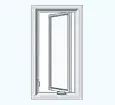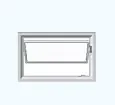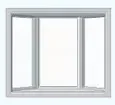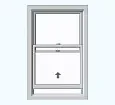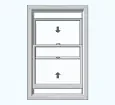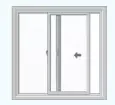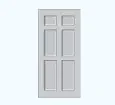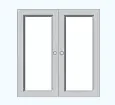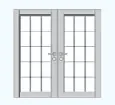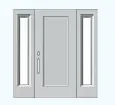Weatherstripping is one of the simplest and most effective ways to improve the energy efficiency of your home. Whether you’re dealing with drafty windows, doors that let in too much air, or both, weatherstripping can make a big difference. This guide will walk you through the basics, helping you understand what weatherstripping is, why it’s important, and how to get started.
What is Weatherstripping?
Weatherstripping involves sealing gaps around windows and doors to prevent air leaks. It helps keep your home comfortable by blocking drafts, reducing energy waste, and improving indoor temperature regulation. Weatherstripping materials are available in a variety of forms, such as adhesive strips, foam tapes, and metal components, each designed for specific applications.
Why is Weatherstripping Important?
- Energy Efficiency
- Proper weatherstripping can significantly reduce heating and cooling costs by minimizing air leakage.
- Improved Comfort
- By sealing drafts, you maintain consistent indoor temperatures and avoid cold spots near windows and doors.
- Noise Reduction
- Weatherstripping can also reduce outside noise infiltration, making your home quieter and more peaceful.
- Pest Prevention
- Sealing gaps helps keep insects and other pests from entering your home.
Types of Weatherstripping
- Adhesive Foam Tape
- Best for: Windows and doors with small gaps.
- Advantages: Affordable, easy to install, and versatile
- Considerations: May lose adhesion over time
- Felt Strips
- Best for: Low-traffic windows and doors
- Advantages: Long-lasting and effective at sealing larger gaps.
- Considerations: Less durable and not ideal for areas with heavy use.
- Rubber or Vinyl Weatherstripping
- Best for: Doors with medium to large gaps
- Advantages: Long-lasting and effective at sealing larger gaps.
- Considerations: Slightly more challenging to Install
- Metal Weatherstripping
- Best for: High traffic areas or historic homes.
- Advantages: Durable and visually appealing.
- Considerations: Requires precise installation and may be more expensive.
- Door Sweeps and Bottom Seals
- Best for: The bottom edges of doors.
- Advantages: Blocks drafts and keeps out dirt and pests.
- Considerations: May require adjustments to fit perfectly.
How To Choose The Right Weatherstripping
When selecting weatherstripping, consider the following factors:
- Location: Doors, windows, or both?
- Gap Size: Measure the gaps around your windows and doors to determine the required material thickness.
- Durability: High-traffic areas may need more robust materials like rubber.
- Ease of Installation: If you’re a beginner, start with adhesive foam tape or felt strips.
Step by Step Guide To Installing Weatherstripping
- Inspect and Measure
- Open and close the windows and doors to identify gaps.
- Use a tape measure to determine the width and lengths of the gaps.
- Choose Your Material
- Based on your measurements and needs, purchase the appropriate weatherstripping material.
- Clean the Surfaces
- Ensure the area is clean and dry for proper adhesion.
- Cut to Size
- Use scissors or a utility knife to cut the weatherstripping material to the correct length.
- Install the Weatherstripping
- For adhesive options, peel off the backing and press firmly into place.
- For non-adhesive materials like metal strips, use nails or screws for secure installation.
- Test the Seal
- Close the window or door and check for any remaining gaps. Adjust as necessary.
Maintenance Tips
- Regularly inspect weatherstripping for wear and tear, especially after seasonal changes.
- Replace damaged or ineffective weatherstripping promptly.
- Keep surfaces clean to prevent dirt buildup, which can affect the seals performance.
Conclusion
Weatherstripping is an easy DIY project that can save you money, improve your home’s comfort, and protect against the elements. By choosing the right materials and following a few simple steps, you can make your home more energy-efficient and cozy in no time.
Start small, and as your confidence grows, you’ll be sealing up every drafty nook and cranny with ease!

